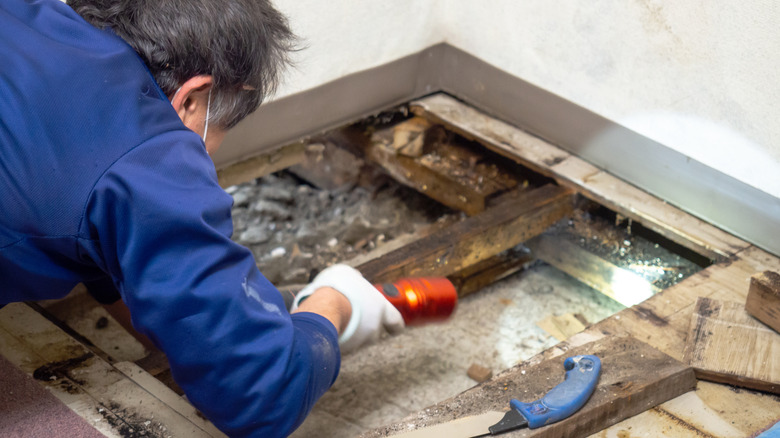How A Screwdriver Could Help Save Your Home From Unwanted Mold After A Flood
Flooding is any home dweller's worst nightmare, whether you rent or own your space. Flooding can happen as a result of a leak in the home, a burst water heater, or a natural disaster such as floods, hurricanes, and tsunamis. If this devastation isn't bad enough, the negative effects can extend long after the water dries up. One of the top ways flooding can hurt your home is through mold growth, which can develop quickly after flooding if the affected area isn't dried completely within 24 hours. Mold can destroy your flooring and foundation, not to mention cause major health issues for you and your family.
If your home has flooded recently, you're probably curious to know if you have mold damage in your flooring, baseboards, and walls. Luckily, there's an easy way to check for mold. You just need a screwdriver or other hard but narrow tool. Simply press the tool gently against the impacted surface and feel for any give — if the hard surface squishes or crumbles, you likely have mold and mold damage.
Look for the signs of mold
This screwdriver trick is especially helpful in cases where the mold might not be immediately visible, like under floorboards or behind plaster. It's also helpful if you're unsure whether you're dealing with a just dirty surface or a case of mold, which can be hard to distinguish at first glance. Dirt and mildew won't cause structural damage, mold will. Probe the surrounding area to find out the extent of the damage. Just because you have mold in one area of your floor or walls, doesn't mean it's everywhere, and you often don't need to replace it entirely.
You can only use the screwdriver trick on hard surfaces, because upholstery and carpeting will be naturally soft regardless of flooding and mold damage. However, you can always take up the carpet in an area and try the screwdriver method on the subfloor.
Ultimately, the screwdriver is just one tool and can't eliminate the mold problem. Consider using the screwdriver in conjunction with a moisture meter; the moisture meter will help you identify where water has accumulated, and the screwdriver can give you a good idea of the extent of the damage. Once you've used the tool to figure out where the mold is, you'll need to clean and kill the mold and repair the damage either by yourself or with the help of a professional.

